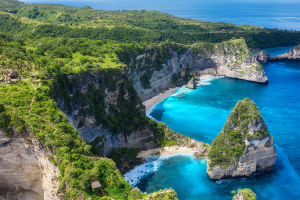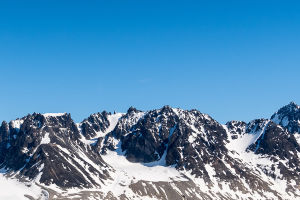Glaciers are natural ice formations that exist on the surface of polar or alpine regions for many years and have a state of movement along the ground. They are formed by the accumulation of snow over time, which goes through a process of compaction, recrystallization, and refreezing.
The resulting ice mass has a certain shape and level and is plastic, meaning that it is capable of producing plastic flow and block sliding under gravity and pressure. Glaciers are an important freshwater resource on the Earth's surface.
Glaciers are one of the largest reservoirs of water on Earth, with a total area exceeding 700,000 square kilometers. The majority of these glaciers are located in Antarctica and Greenland. On high mountains, glaciers can develop, but they require a certain altitude and cannot be too steep.
If the mountain peak is too steep, falling snow will flow down the slope, and there will be no snow accumulation, making the formation of glaciers impossible.
As soon as snowflakes hit the ground, they undergo changes due to external conditions and time, gradually losing their crystal characteristics and becoming spherical snow. This "raw material" is what glaciers are made of.
Although glaciers appear to be stationary, they are actually moving due to their weight, slowly moving downward like a very slow-moving river. The speed of glaciers varies widely, with some moving a few centimeters a year while others move a few centimeters a day.
Glaciers can be divided into two types, marine glaciers and continental glaciers, depending on the climatic conditions and temperature of the region they develop in. Marine glaciers, also known as warm glaciers, develop in marine climate zones with abundant precipitation.
The snow line is close to the area with annual precipitation of 2000 to 3000mm. Due to the large amount of replenishment of marine glaciers and their rapid movement, they have a strong erosion force and can form typical glacial landforms.
In contrast, continental glaciers, also known as cold glaciers, develop in continental climate areas with less precipitation. The snow line is in the area where the annual precipitation is below 1000mm.
In summer, the temperature can reach 0 degrees Celsius, and the temperature of the main body of the glacier is often maintained at -5 to -10 degrees Celsius. Due to the low temperature and low replenishment of continental glaciers, their movement speed is slow.
Glaciers have a significant impact on the Earth's ecosystems and human society. When glaciers melt, sea levels rise, leading to flooding and coastal erosion. The melting of glaciers can also lead to water shortages and ecosystem collapse.
Moreover, glaciers are an important indicator of climate change. They are very sensitive to climate change factors such as temperature and rainfall and can be used as important indicators of global climate change. By observing and studying glaciers, we can better understand the impacts and trends of climate change.
Due to the effects of climate change, the number and size of glaciers around the world are decreasing, leading to serious environmental problems and affecting water resources and ecosystems worldwide.
Glaciers are natural landscapes with important scientific and environmental value, and we should strive to protect these precious resources and reduce the impact of human activities on them.
Glaciers are a crucial natural resource that plays a significant role in the global ecosystem. They are formed over time by the accumulation of snow and ice, and their movements are driven by gravity and pressure.
The two main types of glaciers are marine and continental glaciers, which differ in terms of their climate and rate of movement. As we continue to witness the impacts of climate change, it is essential to recognize the importance of glaciers in the Earth's ecosystem and take action to protect them.


